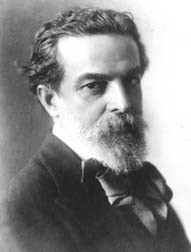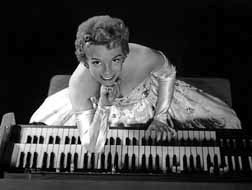aline
New Music On My Page!!! ;-D
Mar 26, 2008

Hi People!!!! After so long I finally got a change to post a new song on my page here. It’s a song by Erik Satie called Gymnopedie n.1. It’s actually a very common piece and every body plays it, but I guess I am pretty "old fashion" when it comes to some pieces... lol... and this one is one of my favourites!!! ;-D So, comments, please!Thanks!!! See ya!
Share
Post comment
Like
Alberto Nepomuceno Conservatory of Music by Aline G. Fletcher
Jul 24, 2007

The Conservatory was founded on May 26, 1938 and it became the most important Music Institution of Northeast in Brazil. The Brazilian musicians Paurilio Barroso and Alberto Klein from the Artist Cultural Brazilian Society had a important role in the creation of the Conservatory. Other important names in the foundation of the school were the pianists Ester Salgado Studart da Fonseca, Nadir Moraes Parente and Branca Rangel. The Conservatory, which brings the name of the Father of the Brazilian Musical Nationalism, has formed generation of talented musicians who have achieved success in the national and international scenery.
For more information visit the School of Music webpage at:
About Alberto Nepomuceno (1864-1920):
Nepomuceno was born on July 6, 1864 in Fortaleza, Brazil. He was the son of Vitor Augusto Nepomuceno and Maria Virginia de Oliveira Paiva. He started studying music with his father, who was a violinist, organist, teacher and chapel-master of the Cathedral of Fortaleza. In 1872, he moved with his family to Recife (Brazil), where he started studying piano and violin. Later on, he became one of the most important defenders of the republican and abolitionist causes in Brazil, being very active in several campaigns over that time period. However, he did not stop being a musician, and at the age of eighteen, he became the director of the Carlos Gomes Club where the all the important music concerts happened in Recife, Brazil.
In 1885, he presented his compositions for the first time at the Musical National Institute, a series of songs all in Portuguese. The main objective of the concert was to achieve those who thought Portuguese was inappropriate for the "bel canto".
He was vert criticised for doing that and he started a true battle against several newspapers and music critics. His battle for the nationalisation of the classical music was extended by his work at the Popular Concert Association from 1896-1906, where he promoted the recognition of several Brazilian Composers.
In 1888, he was able to leave for Europe to further his musical studies. In Rome he studied with Giovanni Sgambatti. In 1890, he moved to Berlin where he studied composition with Heinrich von Herzogenberg and continued his piano studies with the famous teacher Theodor Lechetitzky. In Lechetitzky's class, he met a Norwegian student whom he married in 1893. She had been a student and friend of Edvard Grieg and Nepomuceno moved to Bergen after his wedding and lived in Grieg's house. Grieg, of course, was a proponent of nationalism in composition. Nepomuceno's friendship with Grieg was instrumental in convincing him to write music which reflected Brazilian culture. Before leaving Europe he visited Paris where he met such luminaries as Saint Saens and Vincent D'Indy.
He subsequently returned to Brazil where he taught at the Institutio Nacional de Musica in Rio de Janeiro. Later Gustav Mahler engaged him to conduct at the Vienna Opera but illness prevented this. He eventually returned to Europe in 1910 for a series of concerts in Brussels, Geneva and Paris. During this trip he became good friends with Debussy. Back in Brazil, he fought for the use of Portuguese in opera and song and remained the leading musical personality there until his death. Heitor Villa Lobos was among his many students.
Among his most important works is his third string quartet, subtitled by him "Brasileiro"—the Brazilian. It is dated in his own hand, Berlin 1890. It is probably the first example of the integration of Brazilian folk melody with the Central European romantic idiom. Though performed in Brazil on rare occasions from manuscript copy, String Quartet No.3 remained unpublished until 2005.
Share
Post comment
Like
Homage to Ethel Smith by Aline G. Fletcher -
Jul 24, 2007

Hey people, check this out:
What I would like to share today is a video I found on youtube with performance of “Tico-tico no Fuba” on a Hammond Organ by Ethel Smith, also known as the “Lady of the Organ”. It was recorded for a movie in 1944 called “Bathing Beauty”. Her performance is brilliant and genius, as no one else could ever achieved.
“Tico-tico no Fuba” (Tico-tico Bird in the Cornmeal) was her best known hit. It reached No. 14 on the U.S. pop charts in November 1944 and sold over one million copies worldwide. It was composed on the 1917's by Jose Gomes de Abreu (09/19/1880-01/22/1935), known as Zequinha de Abreu. He was one of the most successfull songwriters of the late 19th century and one of the greatest composer of a Brazilian gender called "Choro". "Tico-tico" gained a lot of popularity internetionally when recorded by Carmen Miranda in the 1940's.
Ethel Smith was born in November 22, 1910 in Pittsburgh and she was an organist who played primarily in a pop style on the Hammond Organ. She was probably the very first musician to achieve success as a pop organist. She loved Latin America and its Music, and when she was a child, her most ardent desire was to go to south of Equator.
Later on, she not only had her wish come true, but she also became the foremost exponent of Latin rhythms on the electric organ. She learned to interpret the music of South America so well that she was offered an engagement at the Rio de Janeiro’s Copacabana, one of the most celebrated night clubs in Brazil over that time. While playing there, she received an invitation to return to New York for the “Hit Parade” Radio Show, being among one of its starts for over a year.
In 1940, Ethel moved to Hollywood and she had several appearances in minor musicals, such as “Cuban Pete” with Desi Arnaz in 1941 and “Bathing Beauty” with Esther Williams in 1944. Ethel appeared in television through the 1950’s and formed her own publishing company in which she put out several instructional books on the Hammond Organ.
“Tico-tico” is one of her most famous recordings and it became later her own theme song. Whether she is heard, her music is entertaining and authentic; her style is bright and filled with remarkable technique and vivid in imagination.
Share
Post comment
Like